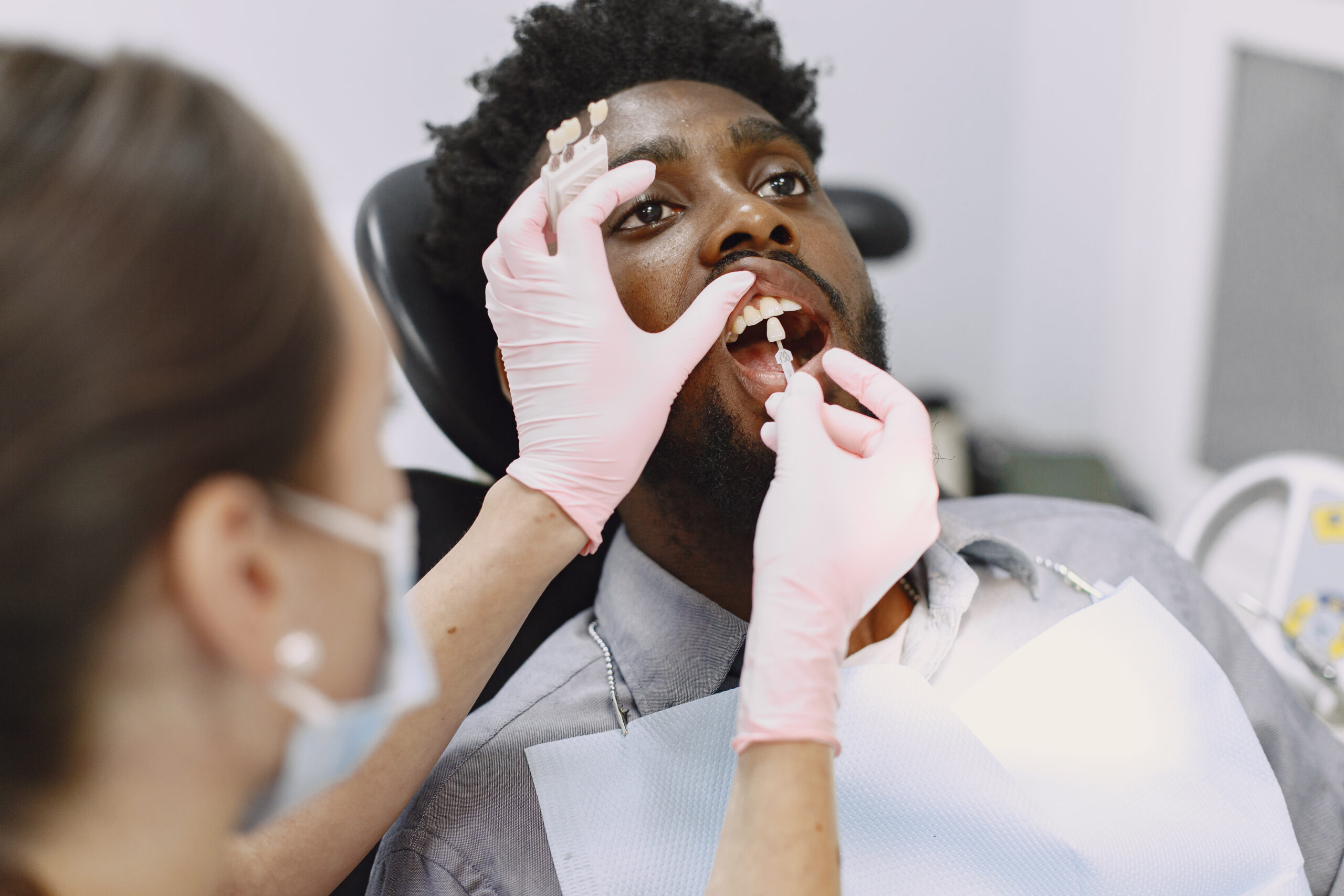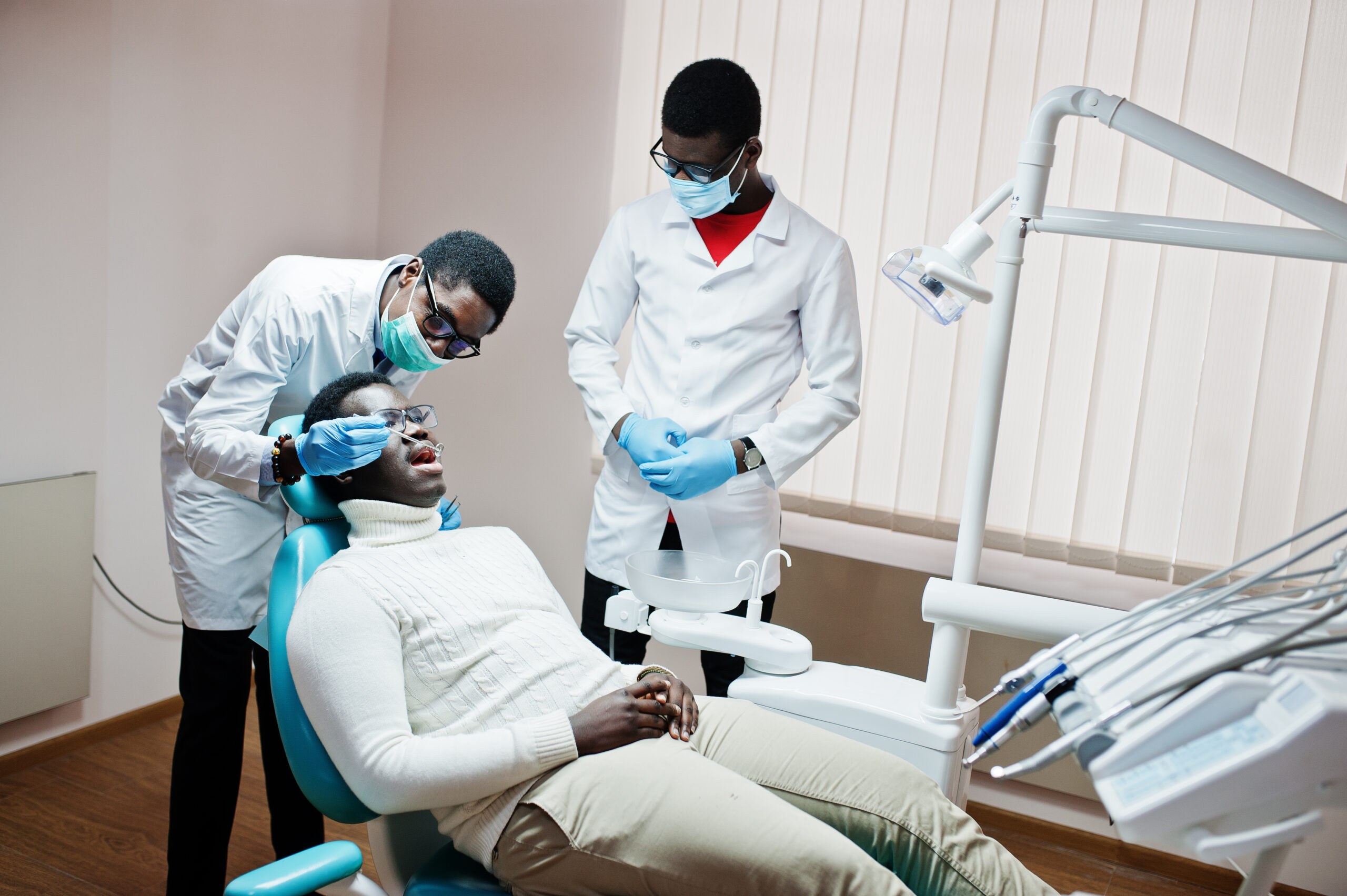
Photo of displeased young woman stretches mouth in forced smile shows her unhappiness wears casual pink t shirt isolated over beige studio wall stands sad alone. Negative human emotions concept
Dental problems can sneak up on you, and do so in the most inconvenient times, like late at night, or on a weekend, even while you are on vacation. While some tooth troubles can wait for a regular dentist appointment, others demand immediate attention.
This is where emergency dentists can help. These dental professionals specialize in handling painful or traumatic oral conditions that require immediate attention. Be it acute pain, physical distress, or weak signals of infection, ignoring these signs sets you up for a more serious issue or long-term damage.
Here are the seven tooth problems that an emergency dentist can fix.
From knocked-out teeth to jaw dislocations, understanding when to seek emergency care can make the difference between saving and losing a tooth.
1. Knocked-Out Tooth
Having a tooth knocked out is one of the most alarming dental emergencies that requires immediate action. Whether it happens during sports, a fall, or an accident, the time window to save that tooth is short, ideally 30 to 60 minutes. After that, the chances of salvaging the tooth drop dramatically.
In fact, in cities like Hamilton, residents have access to specialized care that can handle this type of urgent dental trauma. This is precisely the kind of emergency an emergency dentist Hamilton is trained to manage, often with the ability to reinsert and stabilize the tooth if it’s still intact.
Acting fast and getting professional care quickly can make all the difference in saving the tooth.
2. Severe Toothache
While mild toothaches can be managed with over-the-counter painkillers or by waiting for a dental appointment, severe and persistent tooth pain is different. A severe toothache may indicate a deep-seated infection, decay, or nerve damage, which you do not want to defer visiting your dentist about.
Since X-rays can show a tooth’s nerve, an experienced dentist can see if a nerve is dead or the cause of the pain in about fifteen minutes or less with nothing more than a clinical exam. Initial treatment may include draining an abscess, root canal, or extraction of a badly carious tooth. To relieve pain, stop the infection, and deal with the cause.
Letting chronic tooth pain go by without treatment can also lead to more lengthy and invasive dental work, or worse still, an infection elsewhere in the body if the problem spreads to the jaw or bloodstream.
3. Cracked or Fractured Tooth
Cracks or fractures in a tooth may range from minor cosmetic issues to severe structural damage that compromises the tooth’s integrity. These injuries could be caused by eating hard foods, trauma, and associated conditions such as bruxism (teeth grinding).
Once a crack is present, your tooth’s inner pulp can be exposed, which may cause sensitivity or become infected (a serious issue). Emergency dentists assess the severity of the crack and decide the appropriate course of action.

4. Lost Dental Crown or Filling
Most of the time, dental crowns and fillings are worn for a lifetime, but they can pop out due to wear, old age, or trauma. Losing a crown or filling may not seem like an emergency initially, but it can quickly become one. The tooth is then left unprotected, breaking or decaying and becoming sensitive.
Sharp edges might also injure the tongue or cheek. In such cases, emergency dentists can replace a lost crown or filling quickly to restore the tooth’s function and eliminate pain. Occasionally, a temporary crown or filling may be supplied. It’s essential not to wait, as delaying treatment can lead to the need for more invasive procedures later.
5. Excessive Bleeding After Dental Procedure
Some bleeding after dental work is normal, but it should not last long or be excessive, as this would indicate a problem that needs to be treated by an emergency dentist. It may indicate complications, such as clots that did not form correctly, prior medical conditions, or trauma to the area.
This happens following any invasive treatment or surgery, such as extractions and periodontal surgeries. Emergency dentists can diagnose the causes of this bleeding, use hemostatic agents, suture if necessary, and provide post-operative care instructions.

6. Dental Abscess
An abscess is either periapical (around the tooth) or periodontal (around the supporting soft tissues of the tooth); the most common type is a periapical abscess. It can also be painful and lead to other complications, such as sepsis, when the infection moves into your bloodstream from the site of injury.
Symptoms include extreme, throbbing pain; swelling of the face/jaw; fever; and a foul taste in your mouth.
7. Jaw Injury or Dislocation
Jaw injuries and dislocations occur in falls or from blunt force trauma and are found in sports-related accidents. Those injuries not only throw off the jaw alignment and disrupt the ability to move the jaw freely, but they are also very painful, so much so that speaking is hindered, and breathing can be an issue. A dislocated jaw looks out of place, and the individual may be unable to close their mouth.
In the case of the jaw joint, emergency dentists may determine if it was crushed in the injury and can relocate it, and also whether or not you need to be observed by a different place for treatment.
Conclusion
Dental emergencies can be overwhelming, painful, and frightening, but knowing when to seek help can make all the difference. You should never ignore or postpone a dental emergency, which can not only be extremely painful but could also put you at risk of infection if left untreated.
An emergency dentist is professionally qualified to care for immediate, life-threatening dental issues. Timely intervention to ease the pain and protect your mouth from further problems by stopping more serious conditions from forming.






